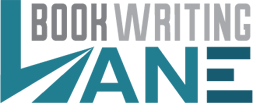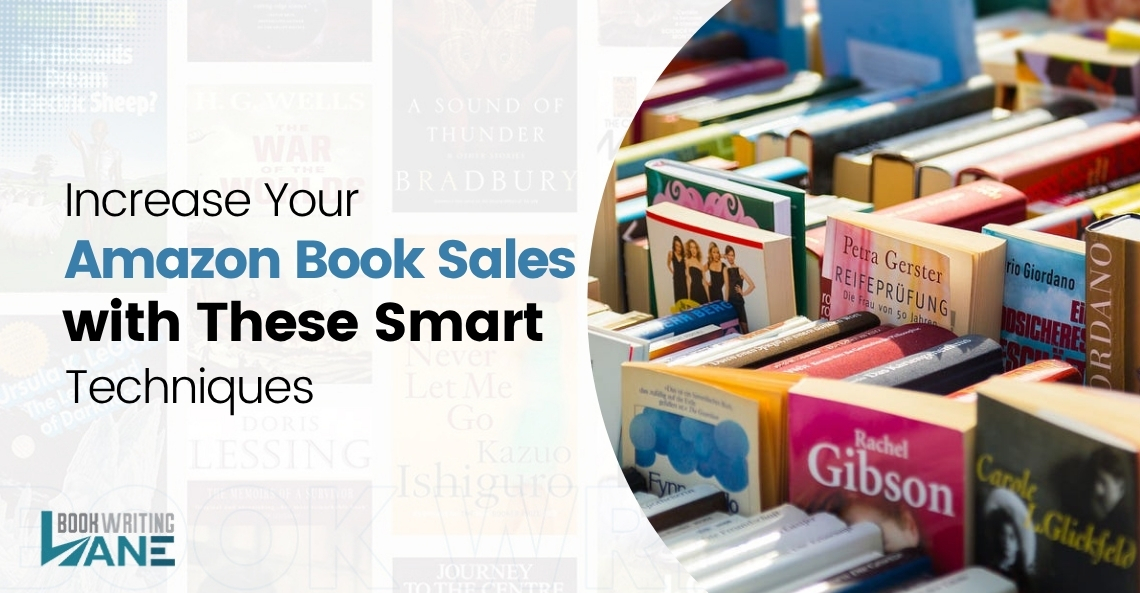Here’s the thing. Selling books on Amazon is a
well-structured system that requires a clear strategy and consistent effort. If
you learn how the system works and align your approach with Amazon’s ranking
and buying algorithms, results will follow.
In this guide, we’ll walk you through exactly what to focus
on, what to test, and how to scale your book sales effectively. Whether you are
a new author or someone looking to optimize their existing book sales, you’ll
find practical, actionable steps that can significantly impact your Amazon book
performance. We cover everything from Amazon book marketing fundamentals to
advanced digital
book marketing techniques.
Understanding
the Book Sales Strategies
Understanding the best strategies for book promotion is key
to success. We’ll explore how Book Marketing plays a crucial role in your journey
and why focusing on Online book marketing and Amazon book
marketing is essential for driving traffic and conversions. Learn the Best strategies
to sell books on Amazon and how you can apply them to your own sales
strategy.
Whether you’re aiming to improve visibility through better optimization or driving targeted traffic with paid ads, this guide provides the tools and insights you need to boost your sales. With the right approach, digital book marketing can amplify your efforts, expanding your reach far beyond Amazon’s platform.
Start
With the Right Mindset
Your book page is a mini store. If the cover, title, and
description fail to persuade, traffic won’t save you. Fix the page before
buying ads or running promotions.
The goal is steady conversions. Small, repeatable wins beat
rare spikes every time.
Understand How Amazon Decides What
Ranks
Amazon cares about relevance and conversions. Amazon book
marketing focuses on making your book relevant to the right audience,
and conversions keep it visible. You need both. That means dialed-in keywords,
the right categories, and a page that actually converts clicks.
Think of your book page as a funnel. Every element should
reduce doubt.
Use
Research Before You Write or Relaunch
Scan top sellers in your niche. Note title patterns,
subtitle promises, and cover styles. You’re not copying. You’re learning what
buyers respond to.
Build a list of primary and long-tail keywords. Fit them
naturally into your title, subtitle, and backend fields.
The
Role of Reviews
Reviews boost trust and conversions. Aim for a steady flow,
not a flood. A real mix of ratings looks natural. Never buy or trade reviews.
Use legitimate reader outreach and back-matter requests.
Add a short review request at the end of your book. Keep it
polite and specific.
Nail
Your Product Page Basics
Your cover must pass the two-second test. Can a stranger
tell the genre and promise at a glance? If not, redesign. Clear typography,
high contrast, and genre cues win.
Write a hooky subtitle. Make the value obvious. Avoid
jargon. Keep it crisp.
Write
Copy That Converts
Open your description with a bold promise or pain point.
Back it up with outcomes, social proof, or a short outline. End with a strong
call to action.
Use short paragraphs and scannable breaks. Clarity beats style every time.
Choose Categories That Actually Move
Pick categories with meaningful traffic and achievable rank
thresholds. Avoid dumping your book in ultra broad groups. Two well-chosen
categories often outperform five random ones.
Track your Best Sellers Rank to see if your category
strategy works.
Price
to Match Buyer Expectations
Price signals quality but must fit the niche. Test small
price shifts. Watch conversion and revenue, not just units sold. If a lower
price hurts perceived value, raise it.
Use KDP free days and countdown deals with a clear plan.
Build
a Simple Launch Plan
Set a seven-day sprint. Day 1 to 2, warm your list and early
readers. Day 3 to 5, run targeted ads and light promos. Day 6 to 7, push a
short social and email burst.
Keep it tight. Measure, learn, and adjust for the next push.
Use
Ads the Smart Way
Start with Sponsored Products. Use automatic and exact match
campaigns. Let auto find ideas. Scale exact match on proven terms. Add product
targeting against comparable titles.
Kill weak keywords. Shift budget to winners. Keep tests
small and clean.
Track
What Matters
Watch impressions, click-through rate, cost per click,
conversion rate, and ACoS or ROAS. CTR tells you if the cover and title attract
clicks. Conversion shows if the page persuades.
Change one thing at a time. That’s how you learn fast.
Build
External Traffic That Converts
Amazon
book marketing rewards consistent conversions from any traffic source. Use
simple landing pages, short emails, and focused social posts to send ready
buyers.
Warm traffic converts better than cold. Teach first. Sell
second.
Use
Email Even if Your List Is Small
Treat every reader like a future launch partner. Offer a
useful freebie. Collect emails with a simple link inside the book. Send quick
updates, not spam.
Ask for reviews politely after value-based emails.
Partner
With Helpful Communities
Join relevant groups and forums. Share snippets, tips, or
behind-the-scenes notes. Earn trust before mentioning your book. Authentic
contributions lead to real sales.
Track which communities send engaged buyers.
Strengthen
Your Branding
Keep a consistent author name, tone, and cover style across
titles. Readers love familiarity. Consistency boosts recognition and repeat
purchases.
Update old covers to match your strongest design.
Use
Data to Guide Iterations
If CTR is low, test a new cover or title. If conversion is
weak, rewrite the description or adjust price. If ads spend without sales,
change targeting or pause underperformers.
Small, weekly tweaks compound over time.
Create
a Clean Reader Journey
Many authors leak traffic. Fix your links. Use a single
landing page for bonuses. Make it easy to join your list and find your other
books.
Reduce clicks. Increase clarity.
Positioning
for Nonfiction
Lead with outcomes. Online book marketing emphasizes
providing solutions. Readers buy solutions. Make the benefit obvious on the
cover and subtitle. Use tables of contents and case studies to prove value.
Close with a direct next step.
Positioning
for Fiction
Genre signals matter most. Covers, tropes, and titles should
match reader expectations. Use a strong hook in the description. Tease stakes
and character dynamics.
Promise the experience your readers want.
Seasonal
and Event-Based Promotions
Tie promos to holidays, conferences, or cultural moments
that fit your niche. Prepare assets early. Coordinate email, social, and ads
around one clear message.
Keep offers short to create urgency.
Cross-Promote
Your Catalog
If you have multiple books, build a simple reading path.
Link the next title at the end. Offer a series box set later. Loyal readers
drive the best economics.
Make discovering the next book effortless.
When
to Relaunch
If your book has great content but weak sales, relaunch. New
cover, sharpened subtitle, better categories, and a fresh ad plan can revive
traction.
Announce the update to your list and communities.
Leverage
Help When You Need It
Not every author wants to manage research, copy, and ads
alone. If you prefer a partner, Book Writing Lane can support planning,
optimization, and execution while you write.
Focus on the draft. Let experts handle the sales engine.
Why Authors Work With a Specialist
Specialists move faster. They bring tested checklists, bid
ranges, and creative frameworks. You skip trial and error. If you want hands-on
help, Book Writing Lane offers practical support tailored to your niche.
A good partner saves time and avoids waste.
Quick Checklist Before You Spend on
Ads
●
Cover matches genre and passes the
two-second test.
●
Subtitle states a clear promise or
hook.
●
Description leads with value and
ends with a CTA.
●
Keywords and categories match real
buyer searches.
●
Reviews grow steadily through
ethical requests.
Where the Big Wins Usually Come From
Most gains are not flashy. Better covers, tighter subtitles,
and sharper categories deliver real lift. Ads amplify a strong page. They can’t
fix a weak one.
Work the fundamentals. Then scale.
Three
Practical Playbooks
Short-term: tighten the page, test pricing, and run a
focused seven-day promo.
Mid-term: build an email funnel, expand
categories, and layer exact match ads.
Long-term: grow a catalog, refresh
covers, and cross-promote.
Each phase builds on the last.
Common Mistakes to Avoid
Chasing every tactic at once leads to noise. Stick to a
simple plan. Test one lever per week. Keep notes. Kill what doesn’t move the
numbers.
Discipline beats hacks.
Putting
It All Together
Your book deserves a smooth buying path. Fix the page.
Target the right readers. Track real metrics. Keep iterating. That’s how you
grow steady sales.
Do the work once. Keep improving with simple tests.
Using
Your Key Phrases the Right Way
If you’re new, start with Amazon book marketing
basics. Focus on your product page and measurable campaigns. When that’s
stable, layer broader Online book marketing to bring in warm traffic that
converts.
As you scale, map out Best strategies to sell books on Amazon
for each stage.
When your foundation is strong, build a lightweight Book
Marketing calendar. Pace your promos and content around launches and
relaunches. Use analytics to guide changes.
For broader reach, expand into ethical, data-driven digital book
marketing.
After your first wins with Amazon book marketing, deepen
your funnel. Use audience insights to sharpen your Online book marketing
topics and angles. Repeat what works.
Keep a living document of Best strategies to sell books on
Amazon you’ve tested.
Set weekly goals for Book Marketing tasks. One cover test. One
description tweak. One ad batch. Review results every Friday. Drop losers.
Scale winners.
Track your digital book marketing channels in one sheet for
clarity.
If your budget is tight, focus on Amazon book marketing
first. That’s where buyer intent is strongest. Once your ACoS is stable, add
gentle Online book marketing to widen the top of the funnel.
Document your proven Best strategies to sell books on
Amazon for future launches.
Build routines. A simple Book Marketing system beats random
effort. Use repeatable checklists for research, copy, and ads.
As your catalog grows, let digital book marketing nurture long-term readers across platforms.
Conclusion
Success on Amazon requires continuous improvement. Optimize your book page, target with purpose, and track the right metrics. Small wins lead to significant results over time. If you need support in your journey, Book Writing Lane can assist with Amazon book marketing strategies to plan, test, and scale effectively.
FAQs
How do I
choose the right categories?
Pick categories with
solid traffic and realistic competition. Check current Best Sellers Ranks. Aim
where your book can rank with steady sales.
What
should I test first on my product page?
Start with the cover
and subtitle. These drive clicks. Then refine the description and price.
Measure CTR and conversion after each change.
Are
Amazon ads worth it for new authors?
Yes, if your page
converts. Begin with small budgets, automatic campaigns, and exact match tests.
Scale only on proven keywords.
How can I
get reviews without breaking rules?
Ask real readers
through back-matter and email. Offer value first. Never pay for reviews or
trade ratings. Keep requests polite and simple.
What if
my book isn’t selling after ads?
Pause and fix
fundamentals. Rework the cover, subtitle, and description. Revisit categories
and keywords. Relaunch with a focused plan.
How often
should I change prices?
Test small changes
and watch conversion and revenue for a full week. If value perception drops,
adjust upward. Keep notes on every test.
Do I need
a big email list?
No. A small, engaged
list beats a large, cold list. Offer a useful freebie. Send short, helpful
emails. Ask for reviews sparingly.


